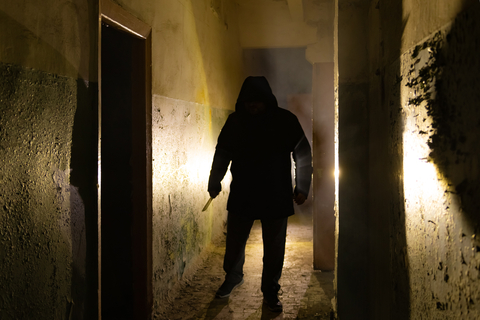The Anatomy of a Serial Killer
(Author Katherine Ramsland took some time out of her busy schedule to talk to us about the anatomy, the behaviors and the pathology of serial killers)
TSM: When did you first get interested in this subject?
KR: My initial interest came from a serial killer operating in my hometown when I was a kid. I watched the news stories and later read the true crime book that was written after his arrest and conviction. Decades later, as I became a writer, I found a budding website called the Crime Library, and wrote the story for the website manager. I wrote 3 or 4 more stories about serial killers for the Crime Library before Court TV bought the website, and I went on to research and write for Court TV for the next 9 years. Many of my books emerged from that research.
TSM: The whole thing about serial killers and the whole unstable home and abuse, there is a direct correlation, but do we have an explanation for when they are brought up in a wholesome finally why they turn?
KR: What defines a serial killer is a specific behavior: having killed two or more victims in at least two incidents. No other personality or behavioral characteristics place all serial killers into a criminological category. In fact, there is a great deal of variation in this population, from a range of motives, backgrounds, ages, and behaviors, to differences in physiology, sex, mental state, and perceptions that influence reasoning and decisions.
Physiology and environment modify each other throughout a lifespan. Each person uniquely processes his or her situation, and some gravitate toward violence. Any factor – abuse, neglect, deviance, bullying – might have different influences on different people. How each person sorts it out and manages his or her situation depends on the interplay of external and internal factors throughout their development. For any given person, we don’t know how much of their development into serial killers is due to something in their physiology vs. something from their environment. We know it’s both, but we cannot accurately calculate which has more influence.
TSM: During researching your book were there any surprises?
KR: Since I’ve researched serial killers for a quarter of a century, I’ve pretty much seen it all. Perhaps a surprise was how long some killers managed to get away with it, like Dennis Rader and Joseph DeAngelo.
TSM: I remember reading about the Amanda Knox case about the messed-up DNA. Can that ever happen here?
KR: Mishandling DNA can be done by anyone who fails to follow protocol, or whose lab does not have proper standards and safeguards. I don’t think I have any cases like that in my book. In addition, some cases have complexities. Many victims have been sex workers, and they might have biological residue on them from several people, not just a killer.
TSM: Tell us the role of cyber sleuthing in catching these killers?
KR: That’s digital forensics. It involves tracking evidential breadcrumbs on a suspect’s cellphone, tablet, computer, GPS, game console or any other digital device that might contain evidence of his or her location, association with a victim, purchase of weapons, maps, or notes. Those officers who are trained in digital analysis have learned protocols for how to handle items without corrupting or losing data, and they know what form criminal enterprise takes online. The hope is that a mistake will be made that will snare someone or assist with building evidence. John Robinson’s emails and computer records assisted to find the bodies of victims he’d placed into barrels on his properties, and Dennis Rader left identifying info on a computer disc he sent to police to extend his cat-and-mouse game.
TSM: Are we the top country in the world that is sharing methods to catch these killers?
KR: I didn’t research that subject, but I know that several other countries are as well-equipped as we are.
TSM: What are the main security check lists for anyone to take to avoid serial killers?
KR: Avoid high-risk activities like sex work or going out alone at night in unfamiliar or dangerous areas. Don’t hitchhike with truckers. Learn the myths about serial killers so you don’t develop erroneous ideas about who might or might not be safe (i.e., don’t use TV cases as your guide). Don’t give out personal information online to strangers. Keep your eyes open and look around whenever you go into large parking lots. Keep your doors locked at home.
TSM: Has your work made you a more cautious person?
KR: I would say I’m more careful, since I’m aware of the kinds of vulnerabilities that predators look for, how they generally operate, and what has happened to naive people who’ve trusted them. If someone in a car asks me for directions, for example, I won’t get too close.
TSM: What are you working on now?
KR: I just finished the world’s most comprehensive analysis of spree killers with a former FBI profiler, Mark Safarik. We’ve formed that work into training for police officers. I’m also working on a novel about a forensic psychologist/investigator, which I hope to turn into a series.

